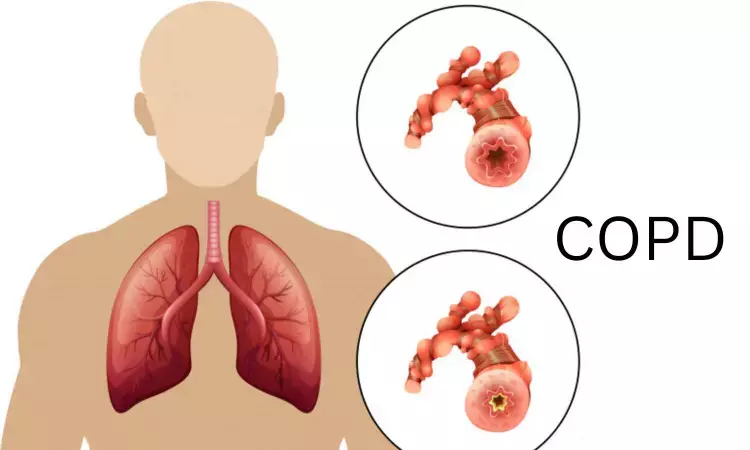- Home
- Medical news & Guidelines
- Anesthesiology
- Cardiology and CTVS
- Critical Care
- Dentistry
- Dermatology
- Diabetes and Endocrinology
- ENT
- Gastroenterology
- Medicine
- Nephrology
- Neurology
- Obstretics-Gynaecology
- Oncology
- Ophthalmology
- Orthopaedics
- Pediatrics-Neonatology
- Psychiatry
- Pulmonology
- Radiology
- Surgery
- Urology
- Laboratory Medicine
- Diet
- Nursing
- Paramedical
- Physiotherapy
- Health news
- Fact Check
- Bone Health Fact Check
- Brain Health Fact Check
- Cancer Related Fact Check
- Child Care Fact Check
- Dental and oral health fact check
- Diabetes and metabolic health fact check
- Diet and Nutrition Fact Check
- Eye and ENT Care Fact Check
- Fitness fact check
- Gut health fact check
- Heart health fact check
- Kidney health fact check
- Medical education fact check
- Men's health fact check
- Respiratory fact check
- Skin and hair care fact check
- Vaccine and Immunization fact check
- Women's health fact check
- AYUSH
- State News
- Andaman and Nicobar Islands
- Andhra Pradesh
- Arunachal Pradesh
- Assam
- Bihar
- Chandigarh
- Chattisgarh
- Dadra and Nagar Haveli
- Daman and Diu
- Delhi
- Goa
- Gujarat
- Haryana
- Himachal Pradesh
- Jammu & Kashmir
- Jharkhand
- Karnataka
- Kerala
- Ladakh
- Lakshadweep
- Madhya Pradesh
- Maharashtra
- Manipur
- Meghalaya
- Mizoram
- Nagaland
- Odisha
- Puducherry
- Punjab
- Rajasthan
- Sikkim
- Tamil Nadu
- Telangana
- Tripura
- Uttar Pradesh
- Uttrakhand
- West Bengal
- Medical Education
- Industry
Tiotropium Influences Eye Measurements in COPD Patients Without Causing Glaucoma: Study

Turkey: A recent study published in BMC Pulmonary Medicine has shed new light on the effects of Tiotropium, a commonly prescribed medication for chronic obstructive pulmonary disease (COPD), on various eye parameters. This research, the first of its kind, focused on how Tiotropium influences anterior chamber characteristics, pupil diameters, and intraocular pressure in COPD patients.
The study revealed that patients with COPD treated with Tiotropium for three months experienced a narrowing of the anterior chamber angle, an increase in intraocular pressure, and changes in both photopic and mesopic pupil diameters. However, the study found that none of these patients developed drug-induced acute angle-closure glaucoma.
Chronic obstructive pulmonary disease (COPD) is a long-term, inflammatory condition of the lungs characterized by persistent airflow obstruction. Tiotropium, an anticholinergic bronchodilator, is frequently used to manage COPD by helping to relax and open the airways. While it is known for its efficacy in respiratory health, its potential ocular side effects have not been thoroughly explored until now. Considering this, Hayriye Bektaş Aksoy and Hakan Koç from Giresun University Faculty of Medicine in Giresun, Turkey, aimed to investigate the effects of Tiotropium on anterior chamber parameters.
For this purpose, the researchers conducted an observational cross-sectional and prospective study from October 2023 to April 2024. They categorized patients into three groups: Group 1, comprising untreated COPD patients; Group 2, consisting of healthy volunteers matched for age and gender; and Group 3, which included patients undergoing treatment with Tiotropium 18 mcg via HandiHaler.
Measurements of anterior chamber parameters, intraocular pressure, and photopic-mesopic pupil diameters were taken during the initial visit for both Group 1 and Group 2 and again at the three-month mark for Group 3.
The study led to the following findings:
- Thirty-six patients were included in each group in the study.
- There were no significant differences in ocular findings between the patient and control groups.
- In COPD patients receiving Tiotropium, narrowing of angle parameters, an increase in photopic-mesopic pupil diameters, and intraocular pressure were observed in the third month of treatment.
The researchers concluded that after three months of Tiotropium therapy via HandiHaler, patients exhibited a narrowing of angle parameters, an increase in intraocular pressure, and changes in photopic and mesopic pupil diameters. Despite these findings, there were no instances of drug-induced acute angle-closure glaucoma.
However, the observed changes in angle parameters suggest the need for cautious use of Tiotropium, particularly in patients with pre-existing narrow angles. The researchers recommend that future studies with larger patient populations and extended follow-up periods be conducted to further validate these findings and assess the long-term implications of Tiotropium therapy on ocular health.
Reference:
Aksoy, H.B., Koç, H. Effect of Tiotropium on eye findings in the treatment of chronic obstructive pulmonary disease. BMC Pulm Med 24, 418 (2024). https://doi.org/10.1186/s12890-024-03240-1
Dr Kamal Kant Kohli-MBBS, DTCD- a chest specialist with more than 30 years of practice and a flair for writing clinical articles, Dr Kamal Kant Kohli joined Medical Dialogues as a Chief Editor of Medical News. Besides writing articles, as an editor, he proofreads and verifies all the medical content published on Medical Dialogues including those coming from journals, studies,medical conferences,guidelines etc. Email: drkohli@medicaldialogues.in. Contact no. 011-43720751


